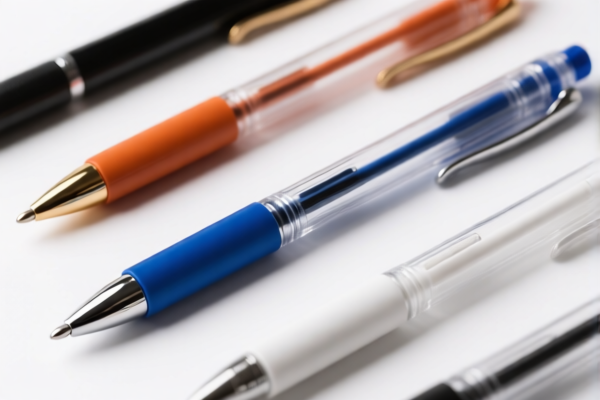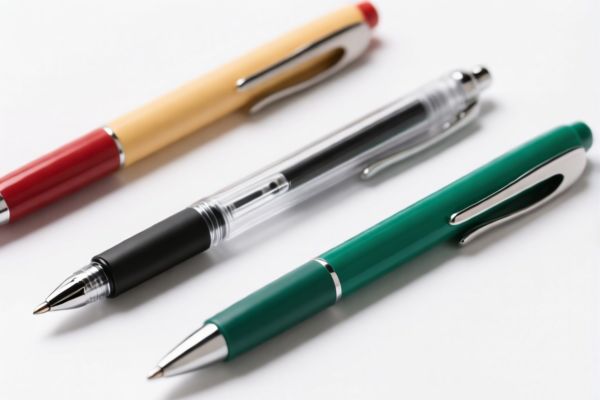| HS Code | Official Doc | Tariff Rate | Origin | Destination | Effective Date |
|---|---|---|---|---|---|
| 3005101000 | Doc | 30.0% | CN | US | 2025-05-12 |
| 3005905090 | Doc | 30.0% | CN | US | 2025-05-12 |
| 3004909280 | Doc | 30.0% | CN | US | 2025-05-12 |
| 9018903000 | Doc | 55.0% | CN | US | 2025-05-12 |
| 9018908000 | Doc | 30.0% | CN | US | 2025-05-12 |




Pupil Pen (First Aid)
A pupil pen, within the context of first aid, refers to a specialized penlight used to assess a patient's pupillary response. It is a crucial component of neurological examinations, particularly in emergency situations.
Material:
- Housing: Typically constructed from durable plastic or aluminum.
- Light Source: Modern pupil pens almost exclusively use LED (Light Emitting Diode) technology due to its energy efficiency, brightness, and long lifespan. Older models may have used incandescent bulbs.
- Power Source: Powered by readily available button cell batteries (e.g., AAA, AA, or CR2032).
Purpose:
The primary purpose of a pupil pen is to evaluate the size, shape, and reactivity of a patient's pupils to light. This assessment helps determine the functionality of the optic and oculomotor nerves, and can indicate potential neurological damage, head injuries, drug intoxication, or other medical conditions.
Function:
- Pupil Size Measurement: The penlight allows for observation of the baseline pupil diameter in normal and dim lighting conditions.
- Direct Light Response: Shining the light directly into the affected eye and observing constriction (narrowing) of the pupil.
- Consensual Light Response: Observing constriction in the opposite eye when light is shone into one eye. This tests the neurological pathways connecting both eyes.
- Accommodation Response: Assessing the pupil's ability to constrict when focusing on a nearby object.
Usage Scenarios:
- Emergency Medicine: Rapid neurological assessment in trauma cases, stroke patients, or individuals with altered mental status.
- Pre-Hospital Care: Used by paramedics and first responders to quickly evaluate patients at the scene of an accident.
- Clinical Settings: Routine neurological exams conducted by physicians, nurses, and other healthcare professionals.
- First Aid Training: Essential tool for training individuals in basic life support and emergency medical procedures.
Common Types:
- Standard Pupil Pen: A basic penlight with a single intensity setting. Most common and affordable type.
- Wheeled Pupil Pen: Features a wheel to adjust the light intensity, allowing for more precise assessment.
- Penlight with Pupil Gauge: Incorporates a scale for measuring pupil diameter directly.
- Digital Pupil Pen: Advanced models with digital displays and data logging capabilities. Less common, used in specialized medical settings.
- Binocular Pupil Pen: Equipped with two lights for simultaneous assessment of both pupils.
The declared goods, “first aid pupil pen,” appear to be a medical instrument used for examination, likely related to the eyes. Based on the provided information, the following HS codes may be relevant:
- 3004909280: This code covers “Medicaments (excluding goods of heading 3002, 3005 or 3006) consisting of mixed or unmixed products for therapeutic or prophylactic uses, put up in measured doses (including those in the form of transdermal administration systems) or in forms or packings for retail sale: Other: Other Other: Medicaments primarily affecting the eyes, ears, or respiratory system: Other: Antihistamines”. While specifically mentioning antihistamines, this code broadly includes medicaments affecting the eyes, and a pupil pen could be considered a medical instrument for eye examination.
- 9018903000: This code covers “Instruments and appliances used in medical, surgical, dental or veterinary sciences, including scintigraphic apparatus, other electro-medical apparatus and sight-testing instruments; parts and accessories thereof: Other instruments and appliances and parts and accessories thereof: Other: Anesthetic instruments and appliances and parts and accessories thereof”. A pupil pen, used for medical examination, could fall under “other instruments and appliances”.
- 9018908000: This code covers “Instruments and appliances used in medical, surgical, dental or veterinary sciences, including scintigraphic apparatus, other electro-medical apparatus and sight-testing instruments; parts and accessories thereof: Other instruments and appliances and parts and accessories thereof: Other: Other”. This is a broader category for medical instruments not specifically classified elsewhere, and a pupil pen could potentially be included here.
Regarding HS code 9018903000 and 9018908000, please note the applicable tariff is a base tariff of 0.0% and an additional tariff of 25.0%, with a total tariff of 55.0% after April 2, 2025.
Customer Reviews
No reviews yet.